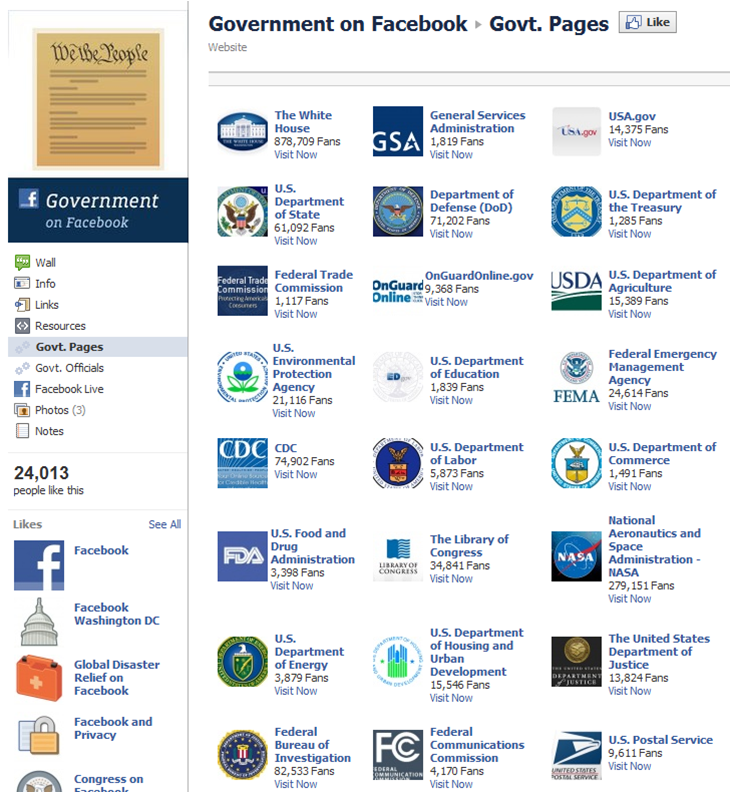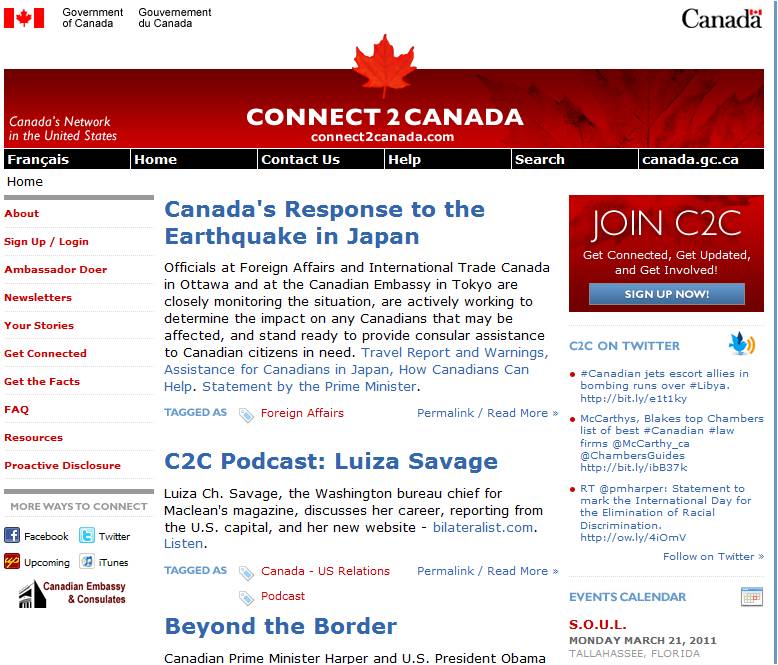I’ve had the honor of providing business strategy consultation recently to a UK agency and in the process became immersed in current uses of social media in government. I learned so much that I considered a five-part series on the topic, but one post will have to do for now!
There are unique political, security and infrastructure challenges presented by government applications of social media, but the power and potential is awe-inspiring. Let’s see if you agree. Here are five significant and fascinating trends …
1) The cry for transparency
“This is a terrible time to be a control freak” – Hillary Clinton, U.S. Secretary of State
There is a broad recognition that government information belongs to the people and technology is enabling a new wave of sharing. A best practice is the newly-designed U.S. Goverment Printing Office site where volumes of documents are now available at your finger tips.
Iceland is looking at social media as a method of “sustainable transparency” through a constant flow of information.
Many UK ambassadors are now blogging on a regular basis. Check out this this post presenting a personal view of the situation in Libya. The government also uses podcasts to address foreign policy issues.
Israel Defense Forces has a YouTube channel chronicling its activities.
Both Brazil and South Korea have created national government documentation portals.
Social media will play a major role in ensuring that Nigeria’s upcoming national elections are transparent, many predict. Expectations are that the techno-savvy young Nigerians will monitor the 2011 elections civic journalism-style via their accounts on YouTube, Facebook, Twitter and blog sites.
A new site, publicmarkup.org, allows citizens to view, and propose suggestions, to specific U.S. federal legislation as it is in process.
A recent Pew Internet study showed the scope of citizen online activities:
- 48% of adult Internet users have looked for information about a public policy or issue
- 41% have downloaded government forms
- 35% have researched government documents or statistics
- 25% have received online advice from a government agency
2) Beyond transparency – citizen engagement
The opportunity of social media and government is not economic or technological. It’s emotional.” — Aneesh Chopra, CTO of the U.S. Government
I recently had a chance to meet Mr. Chopra, America’s first Chief Technology Adviser to the President, who described his role as a government “convener.” I love that idea. Under his watch the government has crowd-sourced solutions to make procurement more efficient and reduce waste. A new site called Challenge.gov rewards citizens with cash prizes for solving government problems.
Australia is also experimenting with this concept in its “Government 2.0 Taskforce,” which funded 17 projects.
The South African government employed social media to “stimulate a constructive Nation Building debate on values and ethics.” The debate took place last week on the Presidency’s Facebook page.
NASA has a range of programs that encourage active citizen participation in agency projects. You can even customize your own NASA project page.
The Israeli Consulate in New York City has more than 11,000 Twitter followers and a Klout score (social influence) of a respectable 57.
Studies show that citizens who engage with government online have a more positive view of government. Promoting close online engagement also:
- Creates better decisions by capturing local knowledge
- Increases capacity of society to understand complexity of problems
- Increases public support by legitimizing the solutions
3) Humanizing government
“Social media is not a second website, it’s a community.” — Tristram Perry, U.S. State Department
Governments are beginning to recognize that people are people and take lessons from how brands are engaging and building an emotional connection with stakeholders. Certainly you would expect a clash between the open culture of social media and the button-up culture of government, but I think the areas that can overcome that institutional hurdle will reap benefits.
 I love that the city of Reno pokes fun at itself with YouTube videos about its problematic, crooked Christmas tree. The city’s communications manager Kristy Fifelski even uses a sock puppet in her videos.
I love that the city of Reno pokes fun at itself with YouTube videos about its problematic, crooked Christmas tree. The city’s communications manager Kristy Fifelski even uses a sock puppet in her videos.- The President of Rwanda Paul Kagame is extremely active on Twitter and responds frankly to issues about his country.
- The U.S. Consulate in Lahore Pakistan is having a Facebook contest and giving away iPods.
- The Love UK Facebook page has discussions about favorite bridges, natural wonders and people of the nation. They attract hundreds of comments on their posts.
- The U.S. Embassy in Jakarta has more Facebook fans than all other embassies combined. Their best practices:
- Spark discussion and give people a reason to belong.
- Know your market and customize your information for your audience.
- Develop unique, engaging content.
- Post regularly.
- Set goals and reassess them periodically.
4) Crisis management
“The Singapore government, as a whole, is not averse to using new media. But we’re not completely sure how to use it yet.” – Goh Yam Song, Deputy Director, Emergency Preparedness, Singapore
Tragically, our world is always experiencing crises and there are plenty of examples where social media may be the ONLY lifeline available to connect with people.
I watched the US and UK embassies in Tripoli use Facebook to instruct evacuations amidst revolution, connecting its citizens with ferries out of the way of danger.
Israel recently held a Twitter press conference about the situation in Gaza.
Emergency management agencies like the Federal Emergency Management Agency (@FEMAinFocus) or state first responders like the Virginia Department of Emergency Management (@VDEM) are active on Twitter, sharing information during crises.
The Canadian Government has set up its own private social network called Connect2Canada to keep a pulse on citizen needs around the world.
5) Real-time response
Democratic governments are here to serve and protect their people, at least in theory. It is the ultimate customer service organization, right? In the private sector, there are many case studies about companies using social media as an effective tool to solve problems in real-time. In fact, the biggest brands are establishing social media “war rooms” to monitor sentiment and help customers.
These practices are beginning to be adopted by state and city governments. With a tweet or text — potholes, broken street lights and other issues are being reported and fixed. The 311-Twitter service in San Franciso, for example, has answered over 7 million calls and thousands of more requests online.
Why wouldn’t we expect national governments to do the same? Unfortunately there are very few examples of this happening so far, but certainly this trend will catch on.
So that’s my take on the high-level trends of government and social media. What is happening in your country, region or city? Any social media success stories?




